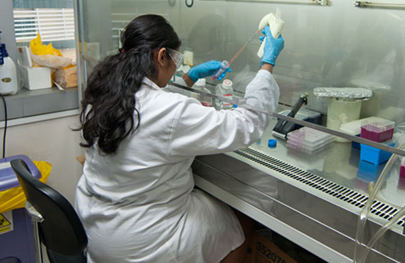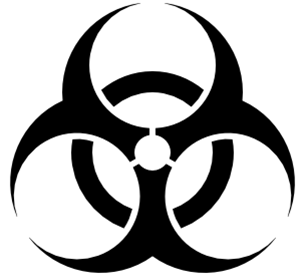Category “A” Biological Agents are high-priority agents which pose the greatest security and health threat in a population. They are the primary most dangerous biological agents with the highest research preference due to their ease of dissemination, high morbidity, and high mortality.
Agents in this category have the potential to cause mass public fear and societal disorder. Category “A” biological agents requires special public health preparedness and action, and they can be easily transmitted from person-to-person after being discharged in a defined animal or human population.
They have the utmost potential for adverse security and public health impact which may result in multitudes of fatalities. Samples suspected to contain biological agents in Category “A” are analyzed in Biological Safety Level-4 (BL4) laboratories. BL4 laboratories are designed to handle and contain infectious specimens and pathogens that are suspected to be potentially dangerous to the general public.
Examples of biological agents in Category “A” include:
- Bacillus anthracis – that cause anthrax.
- Variola major (Smallpox) virus – that cause smallpox.
- Yersinia pestis – that cause plague.
- Francisella tularensis – that cause tularemia.
- Haemorrhagic fever viruses (e.g. Ebola virus, Marburg, Lassa fever, Machupo, and Hantaviruses) – that cause viral haemorrhagic fevers.
- Clostridium botulinum – that cause botulism.
References
Aschengrau A and Seage G.R (2013). Essentials of Epidemiology in Public Health. Third edition. Jones and Bartleh Learning,
Aschengrau, A., & G. R. Seage III. (2009). Essentials of Epidemiology in Public Health. Boston: Jones and Bartlett Publishers.
Castillo-Salgado C (2010). Trends and directions of global public health surveillance. Epidemiol Rev, 32:93–109.
Centers for Disease Control and National Institutes of Health (1999). Biosafety in Microbiological and Biomedical Laboratories, 4th edn, Washington DC: CDC.
Guillemin J (2006). Scientists and the history of biological weapons. European Molecular Biology Organization (EMBO) Reports, Vol 7, Special Issue: S45-S49.
Halliday JE, Meredith AL, Knobel DL, Shaw DJ, Bronsvoort BMC, Cleaveland S (2007). A framework for evaluating animals as sentinels for infectious disease surveillance. J R Soc Interface, 4:973–984.
Nelson K.E and Williams C (2013). Infectious Disease Epidemiology: Theory and Practice. Third edition. Jones and Bartleh Learning.
Porta M (2008). A dictionary of epidemiology. 5th edition. New York: Oxford University Press.
Rothman K.J and Greenland S (1998). Modern epidemiology, 2nd edition. Philadelphia: Lippincott-Raven.
Rothman K.J, Greenland S and Lash T.L (2011). Modern Epidemiology. Third edition. Lippincott Williams and Wilkins, Philadelphia, PA, USA.
Discover more from #1 Microbiology Resource Hub
Subscribe to get the latest posts to your email.



